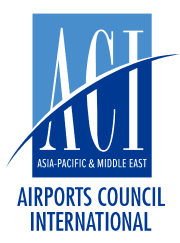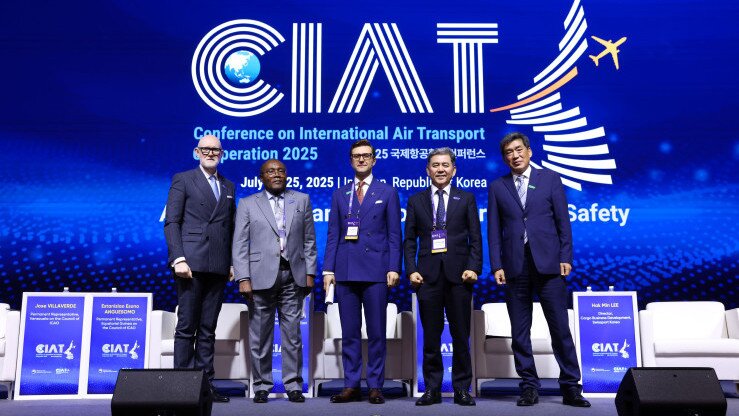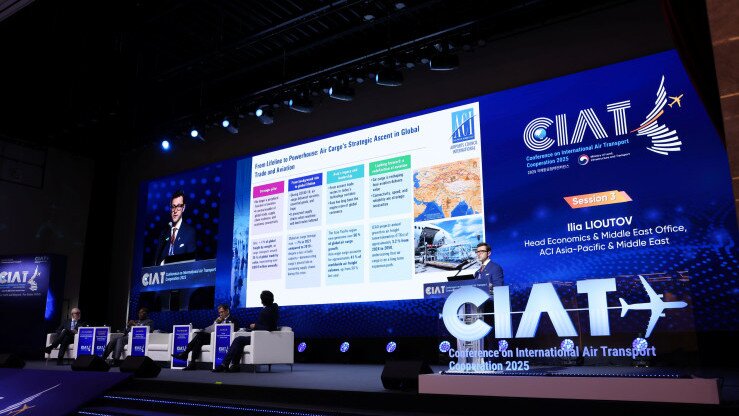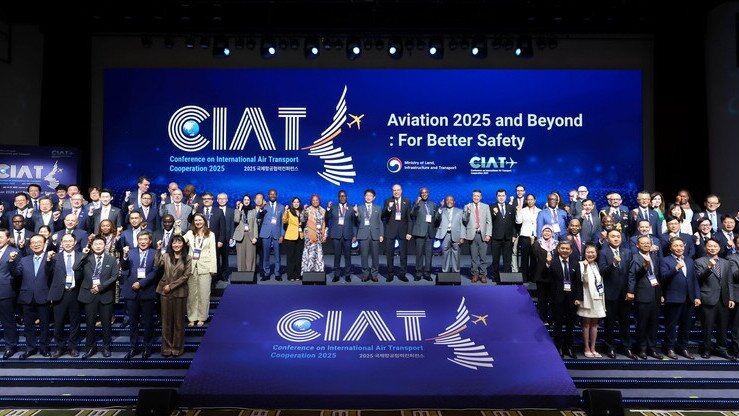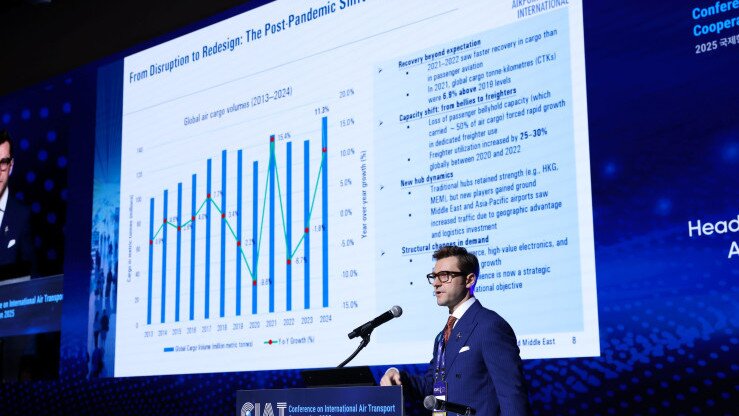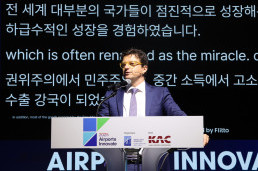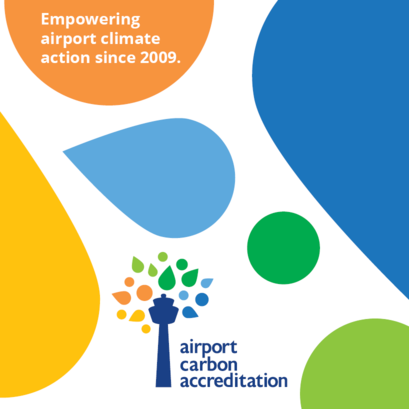
ACI Asia-Pacific & Middle East calls for policy support and innovation for air cargo growth
- 2025-07-31
Representing airport interests across two of the world’s fastest-growing aviation regions, Airports Council International Asia-Pacific & Middle East (ACI APAC & MID) called for stronger policy support and investment in infrastructure and innovation to advance air cargo as one of the key enablers of modern trade and economic development at the prestigious Conference on International Air Transport Cooperation (CIAT 2025) in Incheon, Republic of Korea.
Participating in a high-level panel alongside distinguished colleagues from ICAO, Swissport, and Hanseo University, Mr. Ilia Lioutov, Head of Economics and Middle East Office at ACI APAC & MID, delivered a presentation on the strategic ascent of air cargo as a cornerstone of the global economy.
At a time when the nature of global commerce is evolving at remarkable speed, ACI’s message was clear: air cargo is no longer the silent workhorse behind global supply chains—it is now a central pillar of economic resilience, technological progress, and consumer convenience.
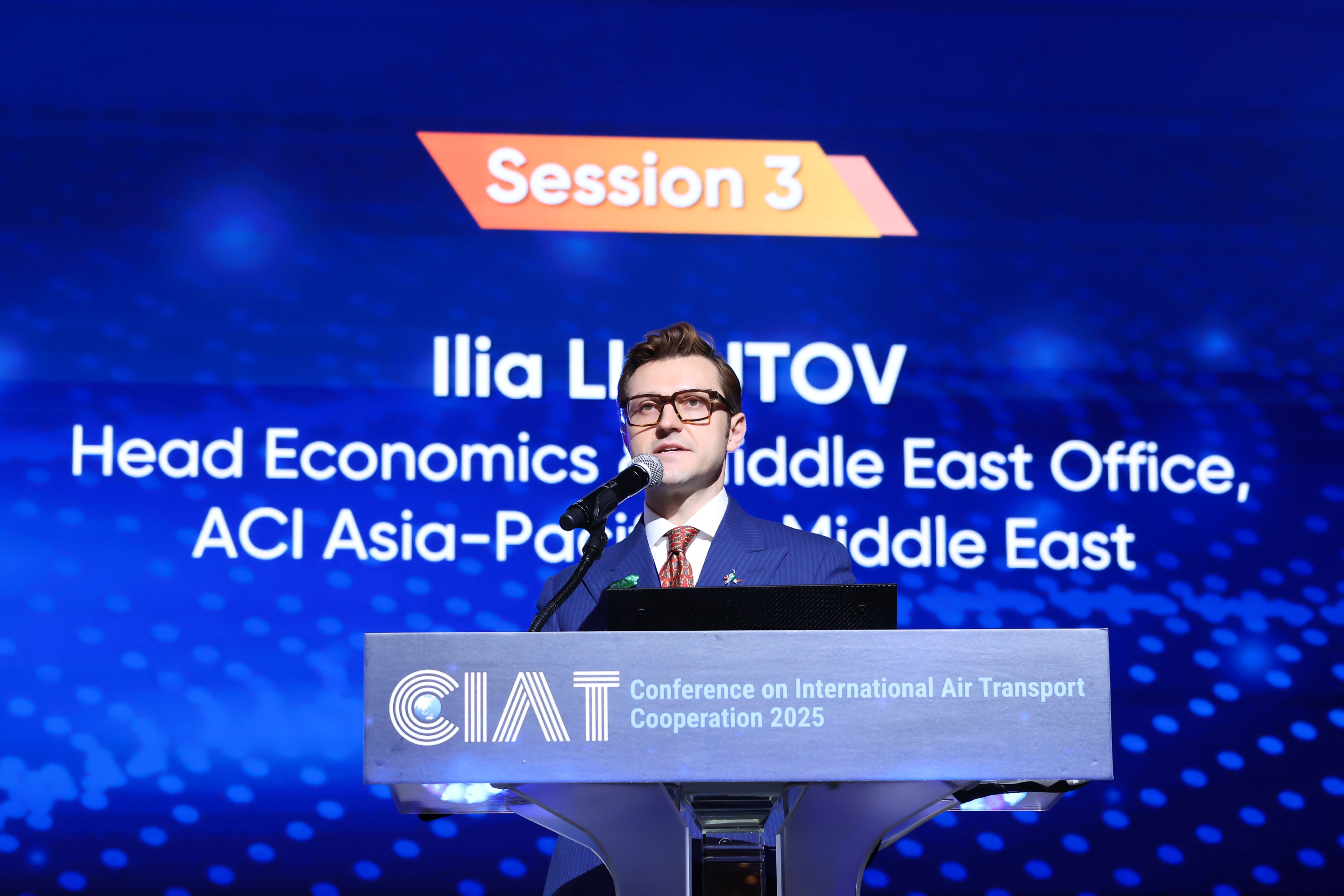
Mr. Ilia Lioutov, Head of Economics and Middle East Office at ACI APAC & MID at the Conference on International Air Transport Cooperation
The Age of Speed: Air Cargo as the Engine of Modern Trade
While accounting for less than 1% of global freight by weight, air cargo carries approximately 35% of global trade by value, over US$ 6 trillion annually. This remarkable figure speaks not only to the economic magnitude of the sector but also to the transformation in trade dynamics.
As Mr. Lioutov stated, “Behind every smile of a child enjoying fresh-cut mangoes anywhere in the world, and behind every thrill of unboxing the latest smartphone, stands the silent, swift force of air cargo.”
From 2021 to 2022, air cargo outpaced the recovery of passenger aviation, rising nearly 7% above pre-pandemic levels despite substantial bellyhold capacity loss. Airports and airlines responded with agility: freighter utilisation surged by 25-30%, with new hubs emerging in Asia-Pacific and the Middle East to fill the gap.
Asia-Pacific and Middle East: The Hub of Cargo Momentum
Today, the Asia-Pacific and Middle East regions jointly account for nearly half (47%) of the world’s air cargo volume. Asian-origin cargo alone represents 41% of global air freight, underscoring the region’s prominence as both a manufacturing base and a strategic logistics nexus.
In 2024 alone, air cargo traffic rose by 15% in Asia-Pacific and 17% in the Middle East, driven by:
- Explosive demand for consumer electronics, with over 1.1 million smartphones shipped daily and Asia producing 70% of the world’s handsets and 50% of semiconductors.
- The rise of Asia’s cold chain revolution, with perishables such as seafood, tropical fruits, flowers, and pharmaceuticals growing over 30% since 2019.
- Increasing intra-regional trade lanes, especially among ASEAN-India-Gulf-Africa corridors, with Asia-Africa capacity alone up 29% since 2020.
A Call for Investment: Infrastructure and Innovation
Looking ahead, airports across the region are poised to add cargo capacity equivalent to 14 Hong Kong International Airports between 2025 and 2035. (Read our article on CAPEX investment in Asia-Pacific & Middle East from 2025 to 2035).
But infrastructure alone is not enough. As Mr. Lioutov urged, “We must design cargo infrastructure that is not only vast but smart.” Top-performing airports now boast sub-24-hour dwell times, while those embracing automation report 30-40% reductions in handling time.
Equally critical is regulatory facilitation. Airports with streamlined customs processes and dedicated cargo corridors demonstrate 15-20% higher throughput per square metre. Digitalisation is also accelerating, with global e-AWB adoption surpassing 75%, heralding an era of frictionless logistics.
The Future is Cargo: Strategic Relevance in a Fragmenting World
The broader backdrop to this transformation is one of geopolitical realignment. Trade tensions, sanctions, and the reconfiguration of supply chains. from globalisation to regionalisation, have turned cargo resilience into a strategic imperative for governments and companies alike. As friendshoring and reshoring gain traction, the Middle East and Asia-Pacific will be indispensable in maintaining supply chain fluidity and competitiveness.
In this context, Asia-Pacific’s expected CAGR of 2.9% and Middle East’s anticipated 3.8% for cargo traffic through 2053 outpaces the global average, solidifying the region’s leadership. The rest of the world is expected to move slower at 2.2% growth over the same period.
Vision and Urgency
ACI’s participation at CIAT 2025 marked a strong statement from the airports of Asia-Pacific and the Middle East that cargo is no longer a secondary activity but a strategic domain in its own right. With air cargo now at the confluence of trade, technology, and policy, airports must embed it into national planning frameworks and multilateral dialogues.
As Mr. Lioutov concluded, “Air cargo is not just throughput in terms of metric tonnes. It is infrastructure. It is connectivity. It is the future.”
- CATEGORY
- COUNTRY / AREA
- Hong Kong SAR
- AUTHOR
- ACI Asia-Pacific & Middle East
